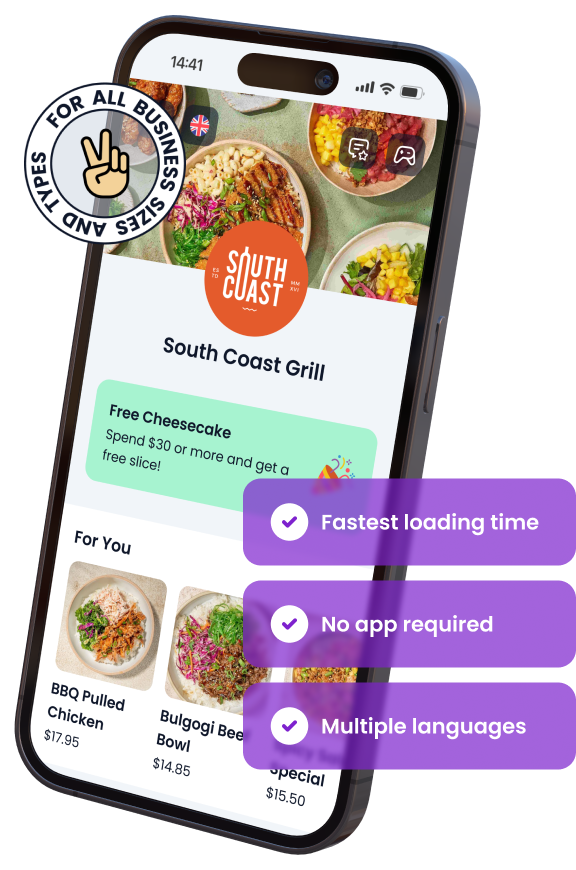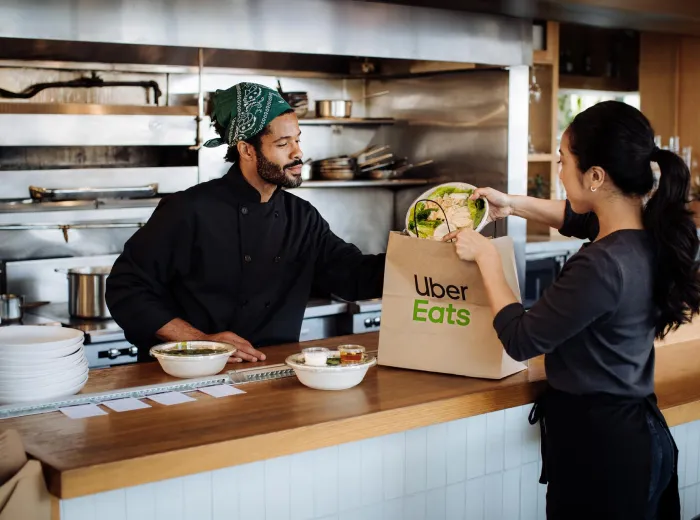

How to Deal with Restaurant Complaints from Customers?
Dealing with customer complaints is an inevitable part of running a restaurant. No matter how well you train your staff or how meticulously you prepare your dishes, issues will arise, and how you handle them can make or break your restaurant’s reputation. While complaints are often viewed negatively, they present a significant opportunity to improve operations and build stronger relationships with your customers.
When managed effectively, complaints can turn unhappy diners into loyal patrons. On the other hand, ignoring or mishandling these situations can lead to poor reviews, damaged reputations, and lost business. In today’s digital world, where a single negative review can reach hundreds, if not thousands, of potential customers, addressing complaints proactively is more critical than ever.
This guide will equip you with the knowledge and tools necessary to handle all types of customer complaints professionally and effectively, ensuring that your restaurant not only survives but thrives in a competitive industry. From training your staff to managing online reviews, you’ll learn proven strategies to turn a complaint into a chance for growth.
Would you like to listen our deep-dive conversation about this article?
Why Managing Complaints is Crucial for Restaurant Success
Effectively managing customer complaints is more than just damage control—it’s a critical part of running a successful restaurant. When handled well, complaints offer invaluable insights into areas where your restaurant can improve. They also provide an opportunity to show customers that you care about their experience, which can lead to higher customer retention and better reviews. Ignoring complaints, on the other hand, can lead to long-term damage to your reputation and bottom line.
The Impact of Complaints on Reputation
Your restaurant’s reputation can be shaped by how you handle complaints.
- Customers often share their experiences online, and how you respond to negative feedback can be just as important as the complaint itself.
- A poorly handled complaint may deter potential diners, while a well-managed one can enhance your image.
- Publicly addressing complaints shows future customers that you are committed to providing a positive experience.
Retaining Customers Through Effective Resolution
Resolving complaints effectively can help retain unhappy customers and turn them into loyal patrons.
- Studies show that customers are more likely to return if their complaint is resolved to their satisfaction.
- Offering a solution—such as a discount, free meal, or heartfelt apology—can leave a lasting positive impression.
- Customers who see that their concerns are taken seriously are more likely to give your restaurant a second chance.
Turning Negative Feedback into Positive Outcomes
Negative feedback, when properly addressed, can lead to operational improvements and customer loyalty.
- Use complaints as constructive feedback to identify areas of improvement, such as service speed, food quality, or staff training.
- Solving issues raised by customers can prevent similar complaints from occurring in the future.
- Customers appreciate restaurants that show they are listening and acting on feedback, which can improve your overall reputation and operational efficiency.
By understanding the importance of complaint management, you can transform potential setbacks into opportunities for growth and build a stronger, more resilient restaurant business.
Common Types of Restaurant Complaints
Understanding the most common types of complaints your restaurant might face is key to being prepared. Complaints typically fall into a few broad categories, including service, food, environment, and pricing. Recognizing these complaint types allows you to create strategies to handle each one effectively and prevent future occurrences.
Service-Related Complaints
Service-related complaints are among the most frequent and can heavily impact a customer’s overall experience.
- Slow service: Long wait times can lead to frustration, especially if customers feel ignored or neglected.
- Rude staff interactions: Impolite or unprofessional behavior from staff can drive customers away and harm your restaurant’s reputation.
- Lack of attention: Guests who feel that their needs are not being attended to—whether it’s refilling water or addressing concerns—often leave dissatisfied.
Food-Related Complaints
Food quality is another major area where complaints arise, as it is central to the dining experience.
- Food quality and taste issues: Customers may complain if the food is bland, overcooked, or not as described on the menu.
- Incorrect orders: Mistakes in the kitchen, such as delivering the wrong dish, can lead to customer dissatisfaction.
- Food temperature problems: Cold or overly hot dishes that aren’t served at the proper temperature often result in complaints.
Ambiance and Environment Complaints
The environment of a restaurant is critical to customer comfort, and issues here can also lead to complaints.
- Noise level and seating issues: Excessive noise or uncomfortable seating arrangements can detract from the dining experience.
- Cleanliness and hygiene: Dirty tables, utensils, or restrooms are common sources of complaints, and poor hygiene can turn customers away permanently.
Pricing and Payment Complaints
Money-related complaints often arise if customers feel they are not getting value for what they paid.
- Overpriced items: Perceived high prices, especially if the food quality doesn’t meet expectations, can trigger complaints.
- Billing errors: Mistakes in the bill, such as being charged for items not ordered or incorrect totals, are sure to frustrate customers.
Each of these complaint categories represents an opportunity to enhance your restaurant’s performance. By addressing common issues proactively, you can improve the dining experience and reduce the likelihood of future complaints.
How to Prepare Your Team for Handling Complaints
Equipping your staff with the right tools and skills to handle complaints is essential to maintaining a positive dining experience and reputation. Properly trained staff can address issues swiftly and professionally, turning a potentially negative situation into a positive one. Preparing your team involves both training and creating clear procedures to ensure they are ready to manage complaints effectively.
Training Staff on Active Listening Skills
Active listening is crucial when handling complaints, as it shows customers that their concerns are being taken seriously.
- Teach staff to give their full attention to the customer, maintaining eye contact and nodding to show understanding.
- Encourage them to avoid interrupting while the customer is speaking and to ask clarifying questions to ensure they fully understand the issue.
- By practicing active listening, staff can defuse tension and prevent the situation from escalating further.
Creating Standard Procedures for Addressing Complaints
Having a clear, step-by-step process for handling complaints ensures consistency in your team’s responses.
- Develop a protocol that includes key steps, such as listening to the complaint, acknowledging the issue, and offering a resolution.
- Ensure that staff members know who to escalate certain complaints to, whether it’s the manager or head chef, to avoid unnecessary delays in resolving the problem.
- A standardized procedure helps staff feel confident in their responses and assures customers that their concerns are being handled professionally.
Empowering Staff to Offer Solutions on the Spot
Empowering your team to resolve minor complaints without needing approval from management can lead to faster resolutions and happier customers.
- Give staff the authority to offer quick fixes, such as a complimentary drink, dessert, or a discount on the bill.
- When staff are empowered to make decisions, it creates a smoother experience for the customer, reducing wait time for a resolution.
- Encouraging autonomy in resolving small issues can prevent larger problems from arising, enhancing customer satisfaction.
Role-Playing Scenarios to Improve Response
One of the most effective ways to prepare your team is through role-playing scenarios that mimic real-life complaints.
- Create various complaint scenarios, such as a customer unhappy with slow service or an incorrect order, and practice how staff should respond.
- Role-playing helps staff become more comfortable with addressing complaints in a calm and professional manner.
- By regularly practicing these scenarios, your team will be better prepared to handle complaints confidently and efficiently during actual situations.
By preparing your team with these skills and procedures, they will be more equipped to handle customer complaints quickly and professionally, which can ultimately lead to a better customer experience and a more positive restaurant environment.
Step-by-Step Guide to Handling Complaints Effectively
Dealing with customer complaints effectively requires a structured approach to ensure the situation is resolved in a way that leaves the customer feeling valued. This step-by-step guide will help your team navigate complaints with confidence, ensuring that even negative feedback results in a positive outcome for your restaurant.
Step 1: Listen Attentively Without Interrupting
The first step in handling a complaint is to give the customer your full attention.
- Allow the customer to express their concerns without interruptions.
- Use body language that shows attentiveness, such as nodding and maintaining eye contact.
- Listening without interrupting shows that you value their feedback and are genuinely interested in resolving the issue.
Step 2: Acknowledge and Empathize with the Customer
After listening, it’s essential to acknowledge the problem and show empathy.
- Use phrases like, “I understand how frustrating that must have been” to validate their feelings.
- Avoid being defensive; instead, focus on understanding the customer’s perspective.
- Empathy helps to de-escalate the situation and can turn a dissatisfied customer into a loyal one.
Step 3: Apologize Sincerely, Even if It’s Not Your Fault
A sincere apology is often the most effective way to begin resolving a complaint.
- Even if the issue wasn’t directly your fault, a general apology on behalf of the restaurant can go a long way.
- Say something like, “I’m really sorry that your experience didn’t meet our standards. We want to make it right.”
- A heartfelt apology shows customers that you care about their experience.
Step 4: Investigate the Problem
Once the complaint has been heard, it’s important to investigate the issue to gather all necessary details.
- Ask follow-up questions to fully understand the situation, such as “Could you clarify what part of the meal was unsatisfactory?”
- Review relevant information like receipts, orders, or notes from staff to ensure you have all the facts.
- Investigating the problem shows the customer that you are taking their concern seriously and are committed to resolving it.
Step 5: Offer a Fair Solution
After you’ve gathered the necessary information, present a fair and reasonable solution.
- Solutions can include offering a refund, replacing a meal, providing a discount, or offering a complimentary item on the next visit.
- Ask the customer if they are satisfied with the proposed resolution. This shows flexibility and ensures the solution meets their expectations.
- A fair and timely solution can turn a negative experience into a positive one, increasing the chances of retaining the customer.
Step 6: Follow Up After the Complaint is Resolved
Following up with the customer after the issue has been addressed is a crucial step that is often overlooked.
- Once the solution has been implemented, check in with the customer before they leave to ensure they are satisfied.
- If the complaint occurred online, follow up with a private message or email thanking them for their feedback and confirming that the issue was resolved.
- Following up demonstrates that you are committed to customer satisfaction and helps rebuild trust.
By following this structured approach, you can resolve complaints in a way that not only fixes the immediate issue but also strengthens your relationship with the customer. This step-by-step guide ensures that both you and your team handle complaints professionally and effectively, leading to a more positive dining experience overall.
How to Respond to Online Complaints and Reviews
In today’s digital age, handling complaints doesn’t stop within the walls of your restaurant. Online reviews are a powerful influence on a restaurant’s reputation, and how you respond to them can either build trust or drive potential customers away. Responding to online complaints effectively shows both the reviewer and potential customers that you care about feedback and are committed to improvement.
Monitoring Review Platforms Regularly
To stay on top of online complaints, it’s crucial to monitor review platforms frequently.
- Regularly check major platforms like Google, Yelp, and TripAdvisor for new reviews.
- Set up alerts to be notified whenever your restaurant is mentioned, so you can respond promptly.
- Keeping an eye on these platforms allows you to address issues quickly before they escalate.
Best Practices for Responding to Negative Reviews
How you respond to negative reviews can significantly affect how potential customers perceive your restaurant.
- Acknowledge the issue publicly: Start by thanking the reviewer for their feedback and apologizing for their negative experience.
- Stay professional and polite: Avoid getting defensive or argumentative, even if the review is unfair or exaggerated.
- Offer to resolve privately: Invite the reviewer to continue the conversation privately by providing an email or phone number. This shows that you’re willing to address their concerns in more detail without airing everything publicly.
Turning Online Complaints into Positive PR Opportunities
Handling online complaints properly can transform a negative situation into positive public relations.
- When you respond thoughtfully and solve the issue, you demonstrate to others that your restaurant values customer satisfaction.
- Sharing how you’ve made improvements based on feedback, such as better staff training or improved service speed, can show potential diners that you’re proactive about addressing concerns.
- Positive follow-up reviews from previously dissatisfied customers can enhance your reputation further.
Encouraging Happy Customers to Leave Positive Reviews
Balancing negative reviews with positive ones is essential for maintaining a strong online presence.
- After successfully resolving a complaint or providing excellent service, kindly ask satisfied customers to leave a review.
- Use subtle reminders in receipts, follow-up emails, or on social media to encourage more positive feedback.
- A steady flow of positive reviews can help offset the occasional negative one, improving your restaurant’s overall rating.
By responding to online complaints with professionalism and care, you not only resolve individual issues but also enhance your restaurant’s public image. Whether it’s a simple apology or a detailed explanation, showing that you’re attentive to online feedback can win over potential customers and strengthen your reputation.
Proactive Strategies to Reduce Customer Complaints
While effectively handling complaints is crucial, preventing them in the first place can save your restaurant time, resources, and stress. Implementing proactive strategies not only improves the customer experience but also reduces the frequency of issues that lead to complaints. By focusing on operational efficiency, customer feedback, and staff training, you can create a smoother dining experience that minimizes the likelihood of negative feedback.
Creating a Clear Complaint Policy
Establishing a transparent and accessible complaint policy can set customer expectations and prevent misunderstandings.
- Post your complaint policy in visible areas, such as on menus, near the register, or on your website.
- Ensure the policy outlines how customers can raise concerns and what steps you will take to address them.
- Having a clear, written policy shows customers that you take their feedback seriously and are committed to resolving issues.
Encouraging Immediate Feedback Before Customers Leave
Encouraging customers to share their feedback while they’re still at your restaurant allows you to address concerns in real time.
- Place comment cards at tables or encourage staff to ask customers about their experience before they leave.
- Use technology such as tablets or QR codes that allow customers to submit feedback quickly and easily.
- By addressing complaints on the spot, you can resolve issues before they escalate and prevent negative online reviews.
Using Technology to Track and Resolve Issues
Leveraging technology can help streamline the process of tracking and managing customer feedback.
- CRM systems: Use customer relationship management software to log and track customer complaints, ensuring that no issues fall through the cracks.
- Feedback analysis tools: Implement AI-driven tools that analyze reviews and feedback to identify recurring issues, such as slow service or specific menu items causing dissatisfaction.
- Survey platforms: Encourage guests to complete post-visit surveys via email or SMS, allowing you to gather insights and spot trends early.
Regular Staff Training on Customer Service
Ongoing staff training is key to maintaining a high level of service and reducing complaints.
- Regularly update your team on best practices for customer service, including how to address concerns proactively and how to prevent common complaints.
- Conduct refresher training on topics such as food handling, order accuracy, and maintaining cleanliness to ensure standards are consistently met.
- The more prepared your staff is, the better they can prevent issues that lead to customer dissatisfaction.
By being proactive and focusing on prevention, your restaurant can greatly reduce the number of complaints. These strategies not only enhance the customer experience but also lead to smoother operations and a more positive dining environment.
How to Handle Difficult or Aggressive Customers
At some point, every restaurant will encounter difficult or aggressive customers. Whether they are upset about a legitimate issue or simply having a bad day, it’s crucial to handle these situations calmly and professionally. By employing the right strategies, you can defuse tense encounters, protect your staff, and potentially turn a negative experience into a positive one.
Recognizing When a Customer is Escalating
Not all difficult customers start out aggressive, but recognizing the early signs of escalation can help you manage the situation before it gets out of hand.
- Verbal cues: Raised voices, aggressive language, or repeating the same complaints loudly.
- Non-verbal cues: Body language such as crossed arms, pacing, or standing too close to staff members can indicate frustration.
- Emotional cues: Customers who appear visibly upset or stressed may need immediate attention to prevent escalation.
Staying Calm and Composed in Heated Situations
Maintaining your composure is key to diffusing tense situations with aggressive customers.
- Remain calm: Speak in a low, steady tone, regardless of how the customer is behaving. This can have a calming effect on the situation.
- Avoid confrontation: Do not match the customer’s aggressive tone. Instead, focus on listening and understanding their frustration.
- Use positive body language: Stand at a comfortable distance, avoid crossing your arms, and maintain open posture to convey approachability.
When to Escalate to Management
Sometimes, a situation may require involvement from higher management to resolve the issue more effectively.
- If a customer becomes verbally abusive or refuses to calm down, notify a manager or supervisor to take over.
- Managers often have more authority to offer solutions such as refunds or special compensation, which may be required to satisfy the customer.
- Escalating the issue when necessary shows professionalism and ensures the situation is handled at the right level.
Safely Dealing with Disruptive Behavior in Your Restaurant
In rare cases, customers may become physically aggressive or disruptive, posing a safety risk to staff and other diners.
- Stay safe: Ensure that you and your staff maintain a safe distance from the customer. If they become physically aggressive, do not engage—call security or the authorities if needed.
- Keep calm under pressure: Do not provoke or attempt to physically remove the customer. Your goal is to contain the situation until help arrives.
- Protect your staff and customers: In extreme cases, consider calmly asking other customers to leave the area if the disruption becomes severe.
Handling difficult or aggressive customers requires patience, composure, and a well-trained staff. By recognizing when situations are escalating, staying calm, and knowing when to involve management, you can effectively manage these challenging encounters and maintain a positive environment in your restaurant.
The Importance of Following Up After a Complaint
Following up with customers after a complaint is not just a nice gesture—it’s an essential part of showing that you value their business and are committed to improving their experience. A well-executed follow-up can rebuild trust, enhance customer loyalty, and provide valuable insights into areas that may need improvement. It turns a potentially negative situation into an opportunity to strengthen the relationship with your customers.
How Following Up Boosts Customer Loyalty
When a complaint is followed up on, customers feel heard and appreciated, which increases their likelihood of returning.
- Studies show that customers who have had a complaint resolved well are often more loyal than those who never had an issue at all.
- A follow-up shows that you care about their experience and are committed to ensuring it doesn’t happen again.
- It provides an opportunity to express gratitude for their feedback and reinforce their importance to your business.
Methods for Reaching Out to Dissatisfied Customers
There are several effective ways to follow up with customers after resolving their complaints, depending on the situation and their preferences.
- Phone call: A personal phone call from the manager or owner can leave a strong impression and show that you are dedicated to making things right.
- Email or text: A written follow-up thanking the customer for their feedback and asking if they are satisfied with the resolution is a simple yet effective method.
- In-person follow-up: If the customer is a regular, have a manager check in with them during their next visit to see if their concerns have been resolved.
Offering Incentives to Encourage Return Visits
Offering a small incentive as part of the follow-up can encourage the customer to give your restaurant another chance.
- Discounts: Offering a discount on their next visit shows that you value their business and want to make up for the previous negative experience.
- Complimentary items: A free dessert or drink on their next visit can be a gesture of goodwill that leaves a lasting positive impression.
- Exclusive offers: Inviting them to a special event or providing an exclusive promotion helps make the customer feel appreciated and more likely to return.
Tracking Recurring Issues to Improve Restaurant Operations
Follow-ups also provide valuable data on recurring complaints, helping you spot trends and address underlying issues.
- Record keeping: Maintain a log of complaints and their resolutions, noting any patterns that emerge over time.
- Operational improvements: Use this data to identify common problems, such as slow service or issues with specific menu items, and take steps to prevent them from reoccurring.
- Continuous feedback loop: Following up not only ensures customer satisfaction but also gives you ongoing feedback to refine your restaurant’s operations.
By following up after a complaint, you demonstrate that you are not only committed to resolving the issue but also to improving your overall customer experience. This step helps build customer loyalty, provides valuable insights for your business, and strengthens the long-term relationship with your patrons.
Case Studies: Examples of Restaurants Handling Complaints Well
Real-world examples of how restaurants have effectively handled complaints can provide valuable insights and inspiration. These case studies showcase how addressing complaints thoughtfully and professionally can turn negative situations into positive outcomes, leading to customer loyalty and an improved reputation. Below are examples of restaurants that successfully managed customer complaints and turned them into opportunities for growth.
Case Study 1: Turning a Negative Yelp Review into a 5-Star Experience
A busy bistro in New York received a harsh one-star review on Yelp due to slow service during a peak hour.
- The complaint: The customer expressed frustration with the wait time and felt ignored by the staff.
- The restaurant’s response: The owner publicly apologized on Yelp, explaining the cause of the delay and offering a free meal on the customer’s next visit. The owner then reached out privately, ensuring the customer that service would improve.
- The outcome: The customer accepted the offer, revisited the restaurant, and updated their Yelp review to five stars, praising the owner’s personal attention and the improved service.
Case Study 2: Handling a Food Allergy Complaint Gracefully
A high-end seafood restaurant in California faced a serious complaint from a customer who experienced an allergic reaction due to a mix-up in the kitchen.
- The complaint: The customer, despite alerting the staff of their shellfish allergy, was served a dish containing shrimp.
- The restaurant’s response: The manager immediately apologized, comped the entire meal, and offered to cover any medical expenses. They also assured the customer that the restaurant would review their kitchen protocols to prevent future incidents.
- The outcome: The customer was impressed with the level of care and concern shown by the management and continued to dine at the restaurant regularly, sharing their positive experience on social media.
Case Study 3: Managing Complaints from Large Groups or Events
A restaurant hosting a corporate event in Chicago received complaints from several attendees about slow service and incorrect orders.
- The complaint: Several members of a large group dining at the restaurant complained that their meals were delayed and some orders were incorrect, leading to frustration during a high-profile corporate event.
- The restaurant’s response: The manager personally addressed each table, apologized for the errors, and offered a discount on the entire event bill. Additionally, they provided complimentary appetizers for the group’s next booking.
- The outcome: Despite the mishaps, the corporate client was appreciative of the manager’s attention to detail and booked the restaurant for future events, citing their ability to handle large groups and resolve issues professionally.
These case studies illustrate how a proactive, customer-centric approach to handling complaints can lead to positive outcomes. By addressing issues head-on and offering meaningful resolutions, these restaurants not only retained their customers but also strengthened their relationships and reputations.
Effectively handling customer complaints is a crucial aspect of running a successful restaurant. By understanding the different types of complaints, preparing your team, and responding thoughtfully—both in-person and online—you can turn negative experiences into positive outcomes. Proactive strategies can help prevent issues from arising, while a structured approach to managing difficult situations ensures that customers feel heard and valued. Ultimately, the way you handle complaints not only resolves individual concerns but also strengthens your reputation, builds customer loyalty, and drives long-term success for your restaurant.
ABOUT THE AUTHOR
Erkin Coban
Your Customers Deserve The Best
And we got Menuviel for them.
The fastest and easy-to-use online QR menu with 12+ unique features. Choose Menuviel and elevate your service quality to the next level.
Use free for the first 30 days.

In This Article

Free AI Tools for Restaurants
TRY NOW ➜

Collect positive Google reviews
You can boost your restaurant’s credibility by effortlessly gathering Google reviews directly through your menu.







